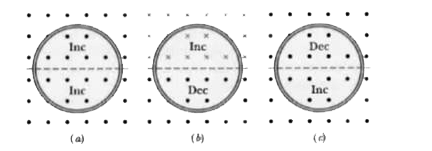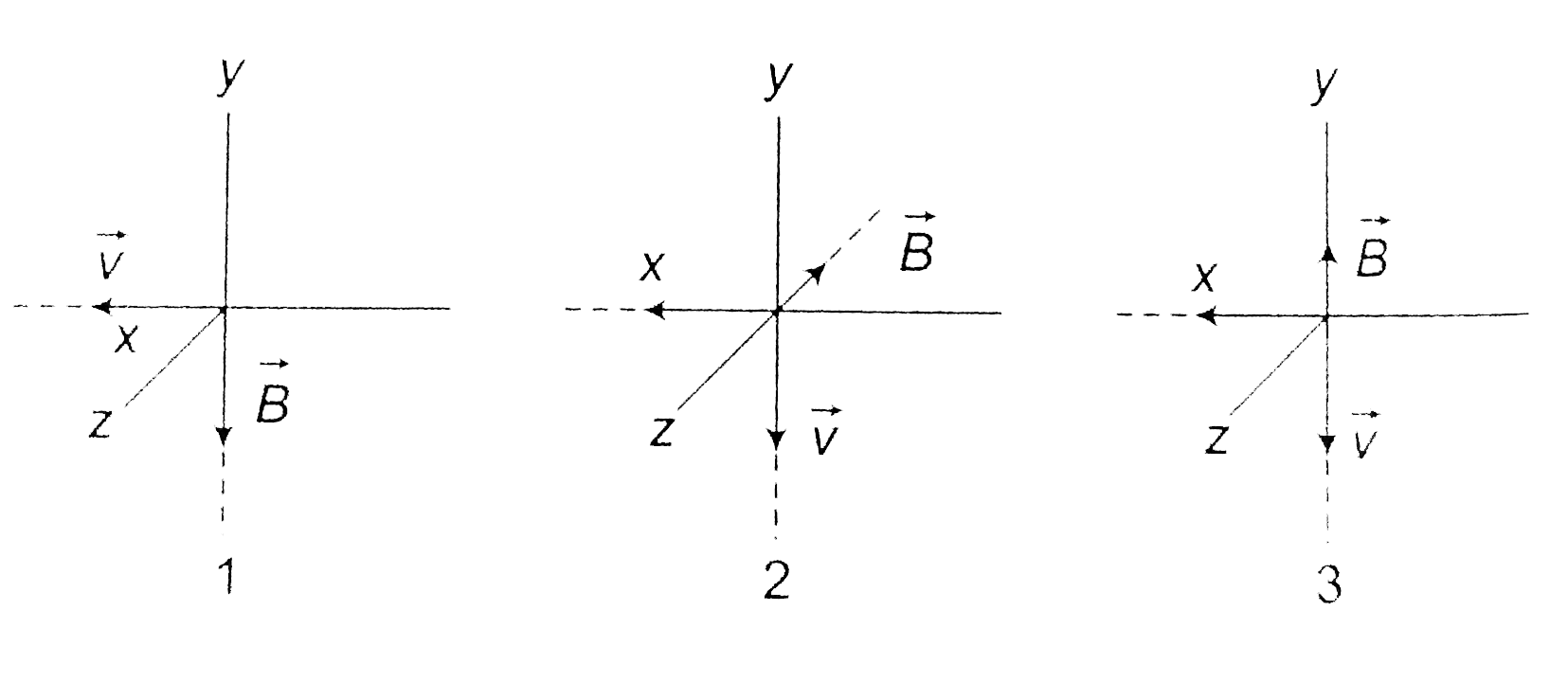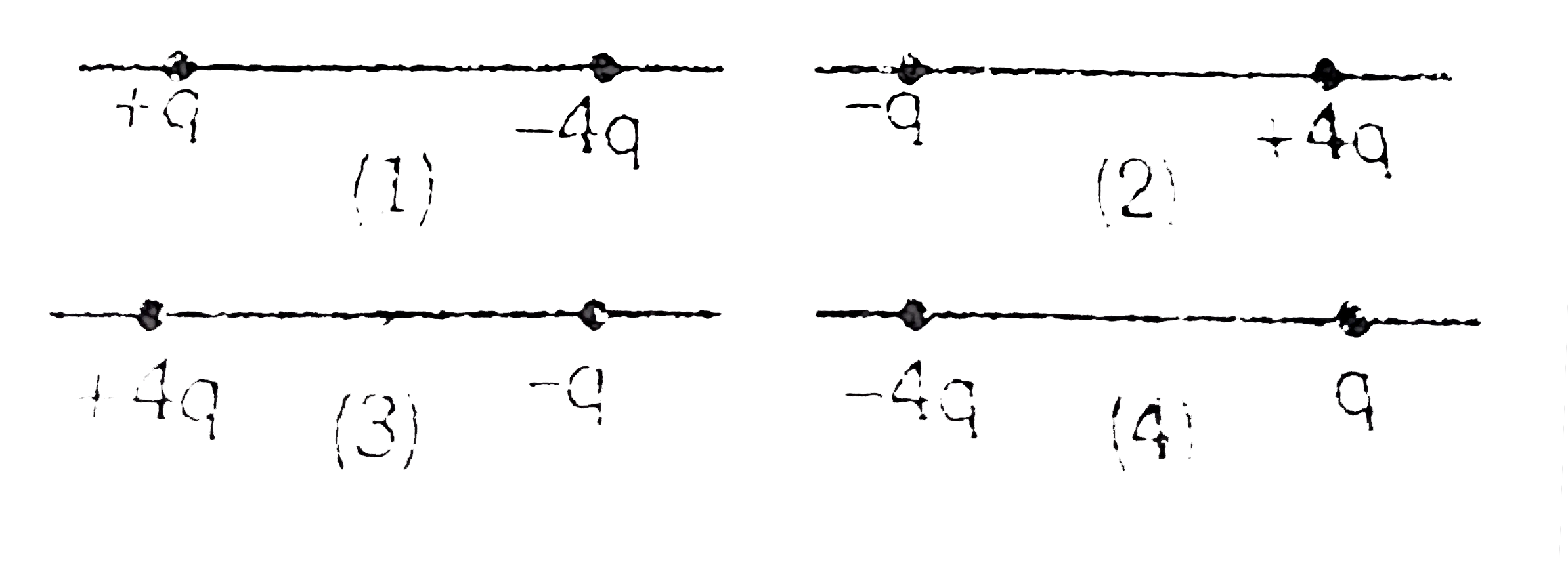Following figures show four situations in which positive and negative charges move horizontaly through a region and give the rate at which each charge moves. Rank the situations according to the effective current through the region greatest first.

i=ii=iii=iv
i>ii>iii>iv
i=ii=iii>iv
i=ii=iii<iv
The correct Answer is:C
Step by step video, text & image solution for Following figures show four situations in which positive and negative charges move horizontaly through a region and give the rate at which each charge moves. Rank the situations according to the effective current through the region greatest first. by Physics experts to help you in doubts & scoring excellent marks in Class 12 exams.
Topper's Solved these Questions
Similar Questions
The figure shows three situations in which identical circular conducting loops are in uniform magnetic fields that are either increasing (Inc) or decreasing (Dec) in magnitude at identical rates. In each, the dashed line coincides with a diameter. Rank the situations according to the magnitude of the current induced in the loops, greatest first.
 View Solution
View SolutionSuppose that three points are set at equal (large) distances r from the center of the dipole in Fig. 24-33: Point a is on the dipole axis above the positive charge, point b is on the axis below the negative charge, and point c is on a perpendicular bisector through the line connecting the two charges. Rank the points according to the electric potential of the dipole there, greatest (most positive) first.
View Solution
Knowledge Check
- Question 1 - Select One
The figure shows a particle moving along x - axis subjected to three particles of acceleration (a). Rank the periods according to the increase they produce in the particle velocity, greatest first.
 A
A B
B C
C D
D
- Question 2 - Select One
The figure shows three situations when an electron moves with velocity →v travels through a uniform magnetic field →B. In each case, what is the direction of magnetic force on the electron
 A+ve z-axis, −ve x-axis, +ve y-axisB−ve z-axis, −ve x-axis and zeroC+ve z-axis, +ve x-axis and zeroD−ve z-axis, +ve x-axis and zero
A+ve z-axis, −ve x-axis, +ve y-axisB−ve z-axis, −ve x-axis and zeroC+ve z-axis, +ve x-axis and zeroD−ve z-axis, +ve x-axis and zero - Question 3 - Select One
The figure shows three circuits with identical batteries, inductors and resistance, Rank the circuits according to the currents through the battery just after the switch is closed, greatest first :
 Ai2>i3>i1Bi2>i1>i3Ci1>i2>i3Di1>i3>i2
Ai2>i3>i1Bi2>i1>i3Ci1>i2>i3Di1>i3>i2
The figure shows three circuit with identical batteries, inductors and resistance. Rank the circuit according to the currents through the battery just after the switch is closed greatest first :
 View Solution
View SolutionConsider positive and negative charge (all of equal magnitude) moving horizontally through two conductor A and B The magnitude of current is ……..in A and ……. In B
 View Solution
View SolutionThe figure shown four situations in which charges as indicated (q>0) are fixed on an axis. How many situations is there a point to the left of the charges where an electron would be ib equilibrium?
 View Solution
View SolutionThe figure shows the face and interface temperatures of a composite slab consisting of four materials, of identical thickness, through which the heat transfer is steady. Rank the materials according to their thermal conductivities, greatest first.
 View Solution
View SolutionFigure shows four situations in which an electron is moving in electric / magnetic field . In which case the de Broglie wavelength of electron is increasing ?
View Solution

